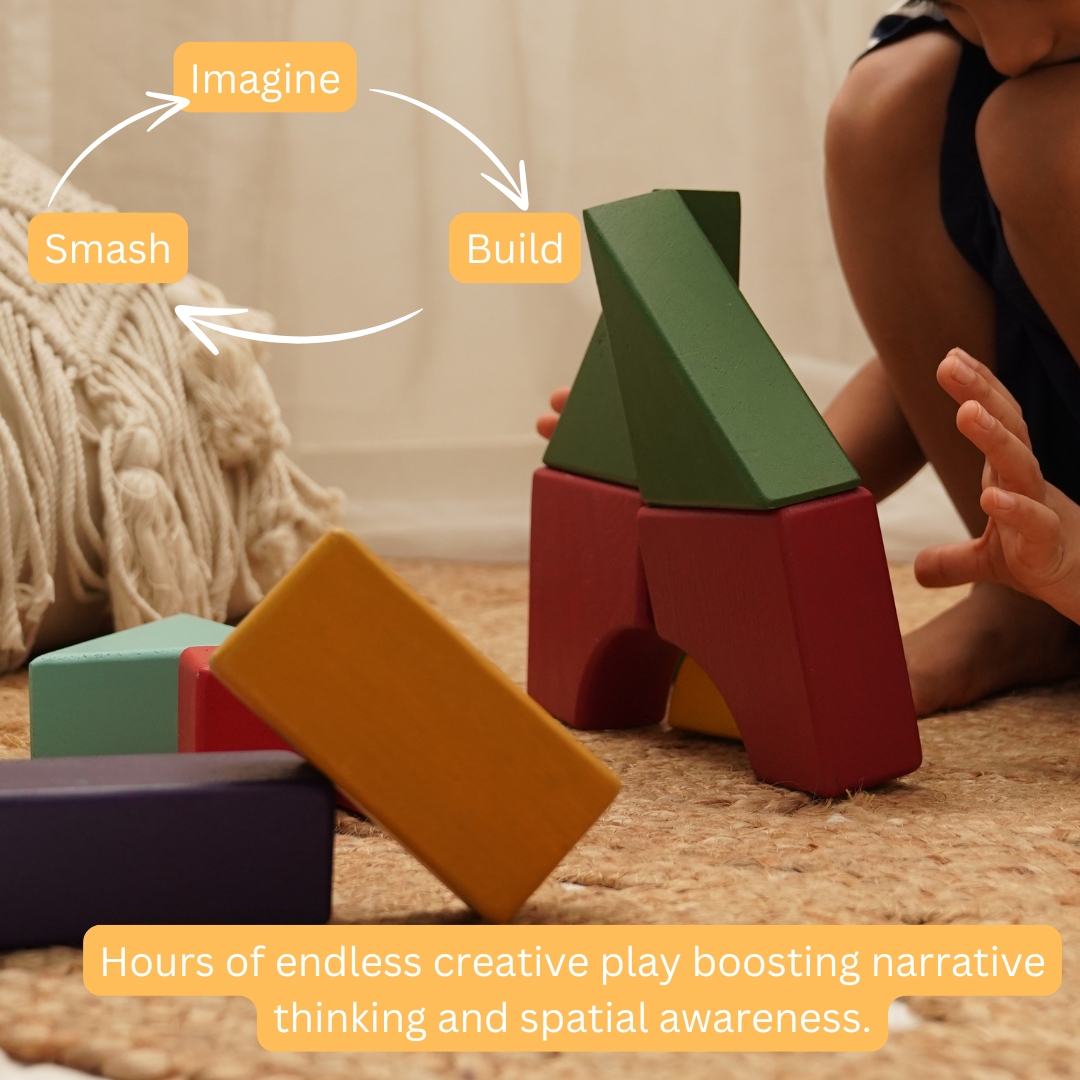
Toy Safety 101: How to Choose Eco-Friendly Toys For Every Age
Have you ever walked into a toy shop, picked up something bright and cheerful, and then wondered, “Is this even safe for my baby to chew, throw, or cuddle?”
It’s a fair question. Many mainstream toys look harmless but can hide risks you’d never expect. From plastics loaded with softening agents to brightly painted blocks coated in questionable dyes, the very things meant to bring joy can sometimes carry hidden harm. And because babies explore the world with their mouths, the stakes are high.
So how do you cut through the noise and find toys that are safe, sustainable, and actually help your child grow? Let’s break it down.
The Hidden Risks in Mainstream Toys 🚫
· Plasticizers like phthalates: These are often added to soften plastics (think rubber ducks, dolls, or flexible toys). The problem? They can leach out when chewed, and studies link them to hormone disruption.
· Heavy metals in paints: Bright, glossy paints sometimes contain lead or other metals, especially in cheaper imports. A chipped toy car might look like a minor issue, but if a toddler chews the paint, it’s a real health risk.
· Cheap fabrics: Soft toys stuffed with synthetic fillers or covered in polyester blends may feel cuddly but often shed microplastics, which babies can inhale.
· Disposable toys: Flashy, noisy items that break within weeks don’t just clutter your home they pile up in landfills.
What to Look for in Safer, Eco-Friendly Toys ✅
Here are the signals that tell you a toy is genuinely safe and earth-friendly:
· FSC-Certified Wood: The Forest Stewardship Council ensures the wood is responsibly sourced and free from harmful finishes. Great for blocks, puzzles, and ride-on toys.
· Food-Grade Silicone: Perfect for teethers, stackers, and bath toys. Safe for chewing, durable, and free of BPA and phthalates.
· OEKO-TEX Fabrics: For dolls, soft toys, and play mats this certification means the fabric has been tested for harmful substances.
· Non-toxic paints and finishes: Look for water-based, lead-free paints on wooden toys.
· Minimal packaging: Brands that pack toys in cardboard instead of plastic aren’t just thinking about your baby, they’re thinking about the planet too.
Long-Life vs Disposable Toys 🧸
Here’s a rule of thumb: the longer a toy lasts, the better it is for your child and the environment.
Cheap toys often break, lose appeal quickly, or can’t be handed down. On the other hand, open-ended, durable toys like wooden blocks, stacking rings, or fabric dolls grow with your child and can be reused across siblings or even generations.
Buying fewer, better toys saves you money in the long run, reduces clutter, and gives your child a more meaningful play experience.
Kids don’t need a toy to do everything for them. In fact, the best toys leave room for imagination.
· Infants (0–12 months): Simple rattles, wooden teethers, fabric books. Focus on sensory safety and grasp.
· Toddlers (1–3 years): Stacking blocks, shape sorters, pull toys, cloth dolls. These build motor skills and problem-solving.
· Preschoolers (3–5 years): Wooden puzzles, pretend-play sets (kitchen tools, doctor kits), musical instruments. They spark role play and creativity.
· Early school age (5+ years): Building sets, craft kits, board games. These encourage cooperation, logic, and persistence.
The magic of open-ended toys is that they grow with your child. A set of wooden blocks can be a tower for a one-year-old, a bridge for a three-year-old, and part of a castle for a five-year-old.
Here are a few eco-friendly toy heroes that are worth knowing (and gifting):
· Toy Trunk (Pune, India) – Creates handcrafted wooden toys inspired by Montessori and Waldorf principles. Known for durable, open-ended play products made from responsibly sourced wood and painted with child-safe, non-toxic colors.
· Bombay Kids Company (Mumbai, India) – Curates premium wooden and eco-conscious toys, often collaborating with local artisans. Focuses on open-ended play that blends learning and fun, using safe finishes and sustainable materials.
· Saha (Pune, India) – Specializes in Waldorf-inspired toys that nurture imagination and sensory exploration. Handmade with natural wood and fabric, using non-toxic finishes and dyes.
· Whitewater Kids (Kolkata, India) – Known for their beautifully handcrafted wooden rattles and baby toys. Made from sustainably sourced wood, polished with organic oils, and designed to be safe for mouthing.
All of these brands can be found at Eco Baby World – Your One Stop Shop for Organic and Sustainable Baby Products
Toys are more than playthings, they’re your child’s first teachers, comforters, and imagination boosters. Choosing wisely means fewer worries about toxins, more confidence in your child’s development, and less guilt about waste.
So next time you pick up a toy, remember: check the materials, think about longevity, and ask if it sparks imagination. Because the best toys aren’t just safe and eco-friendly they’re the ones that become part of your child’s story.
References
· Healthy Children — Choosing Safe Toys
· Environmental Working Group — Phthalates in Children’s Products
· Forest Stewardship Council (FSC)
· OEKO-TEX Certification
· PlanTos Sustainability Approach
